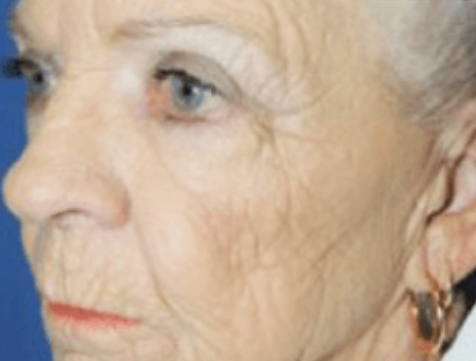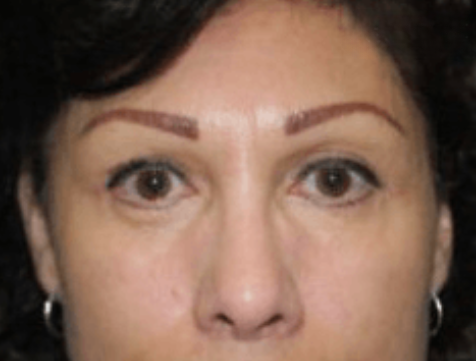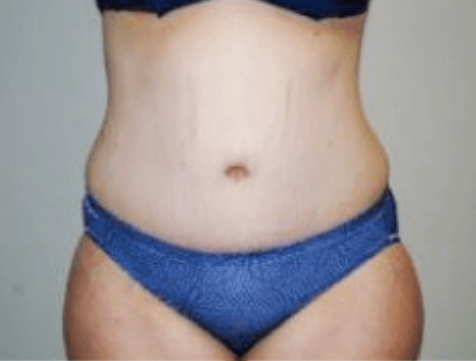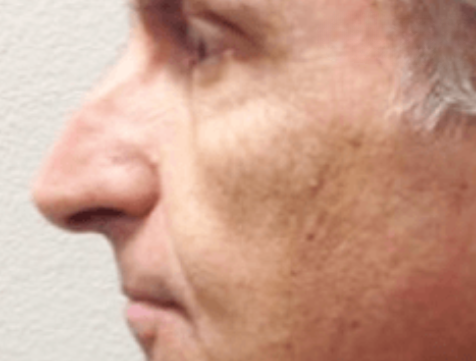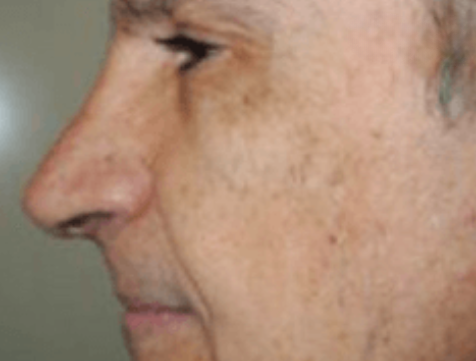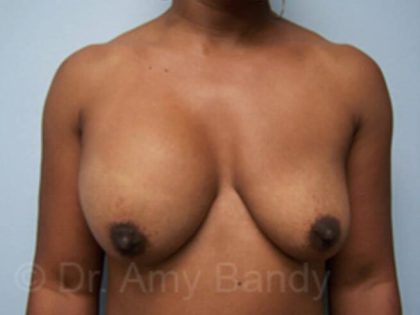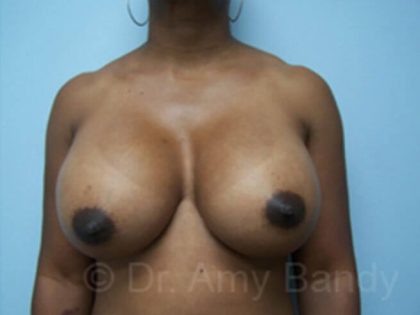Large & Extra Large Breast Implants
Conveniently located to serve the areas of Newport Beach, CA

Dr. Bandy is very well known for creating beautiful bodies with a strong artistic approach to help patients achieve their desired results. Dr. Bandy specializes in extra-large implants. For extra large implants, a breast augmentation is performed alone or in combination with a mastopexy (breast lift). This surgery is usually performed in stages. Learn more about Large Breast Implants at our Newport Beach, Orange County office.
Schedule A ConsultationContents
- 1 Before and After Photos
- 2 Who is Large & Extra Large Breast Implants recommended for?
- 3 Pre-operation
- 4 Post-operation
- 5 Costs
- 6 Recovery
- 7 Meet Mandy and hear her story on getting to 1,450cc implants
- 8 FAQ
- 8.1 What is considered a large or extra large implant?
- 8.2 Can I achieve extra large implants in one surgery?
- 8.3 Should the breast implant be placed in front of the muscle or behind the muscle?
- 8.4 What type of Breast Augmentation Incisions does Dr. Bandy perform?
- 8.5 What are breast augmentation complications and possible patient complaints?
- 8.6 What if I experience any complications?
Before and After Photos
Who is Large & Extra Large Breast Implants recommended for?
Large implants are recommended for anyone wanting larger than 800cc implants.
Pre-operation
How can I prepare?
A patient can prepare for a breast augmentation procedure by getting on a good diet and beginning a vitamin protocol (provided by Dr. Bandy) to aid their body in healing. We recommend accomplishing all house chores prior to surgery that would require a patient to lift anything over 5 pounds or push or pull anything heavy. During your pre-operative appointment our nurses will go over all necessary steps to prepare for your surgery.
Will anesthesia be administered?
Yes, the procedure will be performed under a general anesthetic.
Is painful?
When a patient awakes from surgery, their pain will be minimal as Dr. Bandy injects a long lasting local anesthetic that will reduce pain experienced due to the newly formed pockets that the implants will now sit within.
What if I am sick before?
If a patient is noted to be sick prior to a procedure, it is advised to contact Dr. Bandy’s office immediately to discuss the best way to move forward.
How long before I see results?
Increase in breast size can be seen immediately, however, it takes 4-6 weeks or longer until the swelling decreases.
Post-operation
Is scarring expected after?
Dr. Bandy recommends making her incision in one of three ways. The first is through the areola on the area where the areola meets with the lighter skin on the breast. An incision here makes for a well hidden and blended scar. Many women like this incision because if their scar heals dark, the color will match that similar of their areola and if their scar heals light, the color will match closer to that of the lighter natural breast color. Although a very popular incision site, this incision carries a slightly higher risk for loss of nipple sensitivity- this decrease in sensitivity is usually temporary but sensation may never fully recover. This incision not only cuts through skin, but continues through the breast tissue. The second incision is in the infra-mammary fold. This is under the breast in the natural fold of the breast. (Don’t worry, if you don’t have a natural fold, you will after an augmentation.) This incision allows for a nicely hidden scar and comes with a lowered risk for loss of nipple sensitivity. The third incision is the transaxillary incision which is located in the highest crease in the armpit. This makes for a well hidden scar as well and also carries a lowered risk for loss of nipple sensitivity. Women may choose to implant both saline and silicone implants in any of the incision sites, however, with the transaxillary incision, due to pressure placed on an implant, the maximum size of a silicone implant to be implanted through this incision is reduced.
Can I drive home after?
It is always recommended to have someone assist you in getting home or to your recovery center. If a patient does not have anyone that can assist them at home, we do have a post operative recovery center that we work with that will pick up the patient from our facility.
Should I try avoiding touching the breasts as best as possible after?
After surgery it is advised to avoid the incision area. Massaging the breasts following surgery is not required.
What activity should I refrain from after?
We advise patients refrain from strenuous activity for at least 3 weeks, and avoid lifting anything heavier than 15 lbs for 4 weeks after surgery. A more detailed recovery estimate will be discussed during a consultation when more patient information is received. Specific recovery instructions are provided in the pre-op and post-op periods depending on how the patient is healing.
Do I need to take any medication after?
A patient is usually prescribed an antibiotic and a pain medication. If a patient is undergoing a general anesthesia, sometimes they are prescribed an anti-nausea medication to combat any feelings of nausea that some patients experience after having a general anesthesia.
Costs
What is the average cost?
Breast augmentation prices depend on a number of factors such as implant manufacturer, complexity of the case, surgeons fees, etc.
Learn About Breast Augmentation Cost
Are there financing options?
The patient has multiple financing options. For example, the patient can pay for the surgery on credit card, and make monthly payments back to their credit card. Additionally, CareCredit is a financing company specific for cosmetic surgery; patients can apply for CareCredit, and there are multiple options for CareCredit. Sometimes, patients opt to make payments directly to the office. This is a prepayment plan where a patient would pay until he or she pays the entire balance for the surgery; then, they would have their surgery.
Recovery
What is the recovery time and the healing process?
When a patient awakes from surgery, their pain will be minimal as Dr. Bandy injects a long lasting local anesthetic that will reduce pain experienced due to the newly formed pockets that the implants will now sit within. A patient will still experience discomfort often described as “pressure” or “heaviness” to their chest that is caused by the pressure on the muscle. The intensity of this feeling will last for approximately 2-3 days. After the local anesthetic wears off, the pain will become more noticeable and will last for 2-3 days and will gradually reduce to a dull discomfort when the arms or certain body movement are made. Recovery times vary and are dependent on a patient’s normal daily activities and what they physically do on the job. Most patients will be extremely sore for three days after surgery and are typically advised to take about 3-5 days off of work as a result. We advise patients refrain from strenuous activity for at least 3 weeks, and avoid lifting anything heavier than 15 lbs for 4 weeks after surgery. A more detailed recovery estimate will be discussed during a consultation when more patient information is received. Specific recovery instructions are provided in the pre-op and post-op periods depending on how the patient is healing.
Is there a post-operative recovery facility that you recommend?
We do have a post operative recovery facility that we refer our patients to in Orange County, CA and Los Angeles, CA. In these situations, they will be picked up by the post operative care facility from our recovery room and brought to the recovery center where they are recovered overnight, and then brought back the next day for their follow up appointment.
Meet Mandy and hear her story on getting to 1,450cc implants

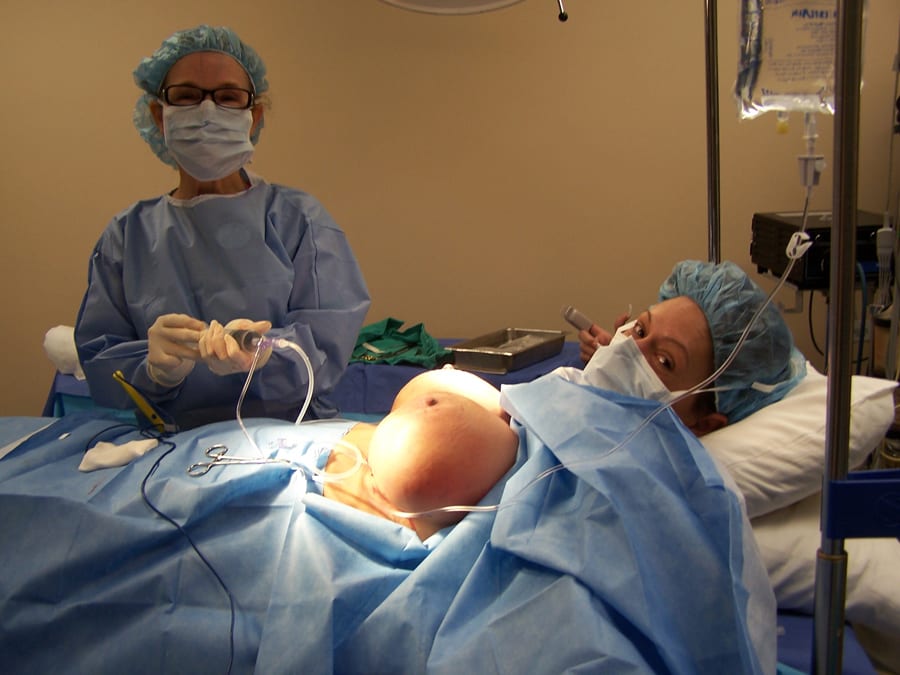
Click here to Read Mandy’s Story
I love having the trust of each patient that I will provide them with the best results of what they are looking for.Schedule A Consultation
– Dr. Amy Bandy, Over 20 Years of Experience
FAQ
What is considered a large or extra large implant?
To many, an implant over 600cc in volume is considered to be a large implant. While the largest silicone implant is limited to 800cc, saline implants have a fill volume range of up to 850cc. Because a saline implant is filled by the surgeon, a qualified surgeon is able to fill a saline implant over 850cc. With additional saline filled into the implant, the look and feel of a saline implant can change and become more firm. Maximum fill volumes and the effect that it has on the look and feel of the implant is a very important topic to bring up during a patient’s consultation with Dr. Bandy.
Can I achieve extra large implants in one surgery?
Depending on a patient’s natural measurements and what size they are looking to achieve, it is sometimes recommended that a patient stage their augmentation. If a patient is naturally small busted, inserting an extra large implant for a first augmentation could potentially stretch their skin too fast and leave a patient with unattractive stretch marks that are irreversible. Implanting larger implants during a first time augmentation might also lower where the breasts naturally sits on the chest leading to a possible “bottoming out” over the course of time. Staging a breast augmentation will allow for a patient’s pockets to expand and allow for a larger implant to be placed at a later time. If a two-stage surgery is needed, a first surgery is usually performed under a general anesthesia followed by a second surgery where the implants are over-filled under a local anesthesia.It is recommended to wait at least 6 months prior to having a second surgery to exchange current implants for a larger size. This allows for proper wound healing as well as allowing all internal sutures and swelling to no longer be present. Remember, although two surgeries to achieve the results that a patient is looking for might not be ideal, a patient’s health and safety is our number one concern and we will not put a patient’s health or recovery in jeopardy. To determine if a large or extra large breast implant is right, it is imperative to meet with Dr. Bandy to discuss, goals, risks, safety, and a surgical plan.
Should the breast implant be placed in front of the muscle or behind the muscle?
When consulting with a surgeon it is important to discuss your implant placement. There are two placement techniques that are used most for breast augmentation and a third placement that is used for varying circumstances. More commonly women choose implant placement behind the pectoral muscle. There are several reasons that a woman might choose to have her implant placed behind the muscle. After a breast augmentation a woman will be able to receive much more accurate readings from a mammogram if the implant is placed behind the muscle as this allows for the woman’s natural breast tissue to stay in front of the implant and muscle. Also, if the implant is placed behind the muscle, the muscle acts as an internal support for the implant. Implants placed in front of the muscle will only have natural breast tissue and skin in front of the implant. Because skin and breast tissue do not have elastic recoil, the breast will stretch over time. For a woman that does not have a lot of natural breast tissue (A-B cups), implant placement behind the muscle might be a good choice as the muscle gives more coverage to the implant and helps create a natural look and natural slope. A third option is called the ‘dual plane’ implant placement. This means that the implant is placed behind the muscle and the upper 2/3 of the implant is fully supported by the pectoral muscle, however, the bottom 1/3 of the implant is allowed to settle into the bottom of the breast by releasing muscle fibers from the connecting bone. This is typically for women who have more of a bottom pole fullness naturally or are on the fence of having a breast lift. An experienced and skilled surgeon such as Dr. Bandy will be able to explain which implant placement is recommended for your own individual needs.
What type of Breast Augmentation Incisions does Dr. Bandy perform?
Dr. Bandy recommends making her incision in one of three ways. The first is through the areola on the area where the areola meets with the lighter skin on the breast. An incision here makes for a well hidden and blended scar. Many women like this incision because if their scar heals dark, the color will match that similar of their areola and if their scar heals light, the color will match closer to that of the lighter natural breast color. Although a very popular incision site, this incision carries a slightly higher risk for loss of nipple sensitivity- this decrease in sensitivity is usually temporary but sensation may never fully recover. This incision not only cuts through skin, but continues through the breast tissue. The second incision is in the infra-mammary fold. This is under the breast in the natural fold of the breast. (Don’t worry, if you don’t have a natural fold, you will after an augmentation.) This incision allows for a nicely hidden scar and comes with a lowered risk for loss of nipple sensitivity. The third incision is the transaxillary incision which is located in the highest crease in the armpit. This makes for a well hidden scar as well and also carries a lowered risk for loss of nipple sensitivity. Women may choose to implant both saline and silicone implants in any of the incision sites, however, with the transaxillary incision, due to pressure placed on an implant, the maximum size of a silicone implant to be implanted through this incision is reduced.
What are breast augmentation complications and possible patient complaints?
With any surgery or procedure there is a risk for complications. Breast augmentation is no different, with possible post surgical complications ranging from post operative bleeding (hematoma) and fluid collection that would require drainage (seroma) to implant rippling and capsular contracture. Although rare, there is always a chance for a patient to form a hematoma which would be noticeable within the first 72 hours after surgery. Although preventable in the operating room with an experienced surgeon, a hematoma can form post-operatively by a surge in a patient’s blood pressure or a patient over exerting themselves and tearing any sutures previously placed. This is why it is imperative for all health complications or risks to be evaluated and under control prior to surgery, as well as ensuring that a patient is made aware of and understands all post operative care instructions and guidelines. Patients can also complain of noticeable implant rippling. Implant rippling, although more prevalent in saline implants, is sometimes unavoidable. Choosing an appropriate implant size that does not go outside of the patient’s own tissue boundaries, and placement behind the muscle reduces the risk of rippling. However, rippling can still occur despite these measures, and there is no definitive way to determine if a patient will experience rippling of the implants. Implant type, size, material and placement are all contributing factors to rippling and it is important to discuss each factor individually with Dr. Bandy during a consultation and pre-operative appointment. The most common complaint heard is that many patients wish that they had gone with a larger size implant. But all in all, patients love the way they look and feel with their fuller, more youthful breasts.
What if I experience any complications?
If a patient experiences any complications, it is requested that the patient contact our office immediately to discuss how to move forward.
